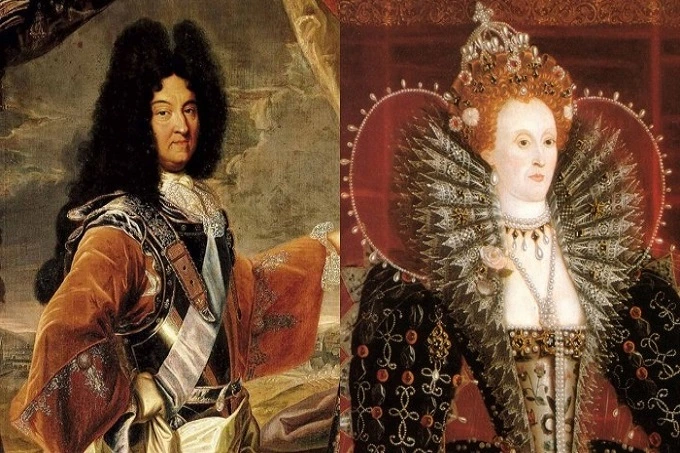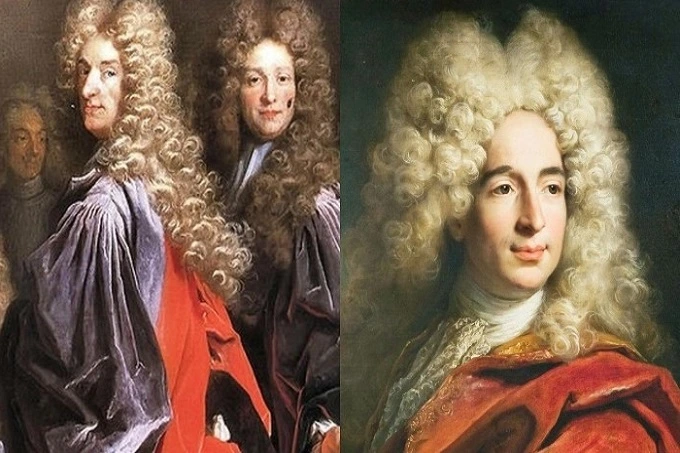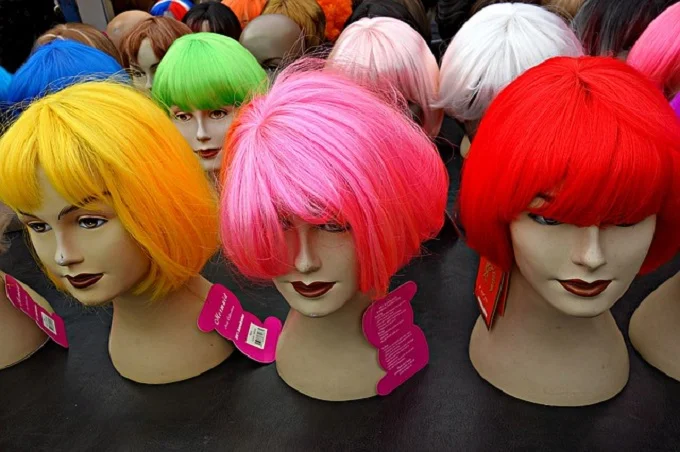Who invented wigs in ancient Egypt and why Middle Ages considered wig machinations of devil?

In our everyday life, there are many things with a long history, including well-known wigs. Over the long years of their existence, they have experienced both popularity and prohibition more than once. Since the history of wigs is traced down to ancient Egypt, who introduced it, why do the Middle Ages people consider wigs the machination of the devils?
In the Middle Ages, for wearing someone else’s strands of hair, they could easily lose their heads, and in the 18th century, not a single person in a decent society could do without a wig. In this article, we will talk about the fascinating history of the origin of wigs, what they were made of, and why they remain relevant to this day.
Reasons for the appearance of the first wigs
Many believe that the first wigs were created in ancient Egypt, but their “ancestors” appeared even earlier, in primitive society. Then men, imitating predators, adorned themselves with animal hair and bird feathers. But wigs resembling modern ones appeared when civilization began to develop. The first mentions of this popular accessory are found in the chronicles of the Assyrians, Sumerians and in the documentation of Ancient Egypt.

Wigs were worn by absolutely the entire population – from the ruling pharaohs to the common people since, at that time, only foreigners who had come on business were allowed to show themselves to Egyptian society without a wig.
The only difference is that wigs made from real human hair were available only to people of the upper classes, and in any palette. Black was considered a classic color, but over time, others appeared, for example, yellow or blue. But ordinary people were content with accessories made of horsehair, sheep wool, and other artiodactyls, and some even made false hair for themselves from tow.
Back then, the wig was a necessity for several reasons. Firstly, religion demanded sacrifices from a person, one of which was hair: they were shaved off, then collected in bunches, and made into a wig. Secondly, a very hot climate: after sunset, the absence of hair helped to enjoy the cool freshness, and in the daytime, they wore a wig to protect their heads from the scorching rays.
With washing the head, and hygiene in general, things were bad, so, until the 19th century, pediculosis was a serious problem for the entire population, so everyone, without exception and ruthlessly said goodbye to their hair. It is worth noting that lice started up even in a wig, but it was easier to get rid of them there – just boil it well. So this fashion accessory has become an excellent solution to many problems.
Wigs quickly conquered the countries of the East and the Mediterranean. Imitating the Egyptian pharaohs, the Persian kings began to wear artificial hair of various styles. They were decorated to your liking with various precious metals and stones.
But most of all, wigs went with a bang to the fashionistas of Rome. For them, they brought a variety of head accessories from all over the world: Indian black, German red, fair-haired, and others.
Prohibition in the Middle Ages and the heyday of the golden age of wigs
In the Middle Ages, wigs were forbidden to wear, as they were strictly condemned by the church. By the way, at the Council of Constantinople (692), a number of Christians were executed for wearing artificial hairstyles. But the real heyday of fashion for wigs happened in the 17th to 18th centuries. This happened with the light hand of the English Queen Elizabeth I. Her love for false hair did not appear by chance.
The fact is that in her youth, the queen had been ill with smallpox, after which her beautiful red curls thinned noticeably. Since then, the ruler could not do without wigs, of which there were about eighty pieces in her personal collection. And since she was a trendsetter, all the courtiers had to follow her example.
The king of France, Louis XIV, who had a noticeable bald spot on his head, found out about this trick of the queen, haunting him. Since then, the king obliged all-male nobility to wear wigs, and fashion entered the life of French ladies. Under Louis XIV, wigs with long wavy curls became popular, they were called “allonge”, which were considered a sign of high status.

The French king increased the staff of hairdressers to five thousand craftsmen, as it was necessary to provide wigs for all noble persons. It was then that this occupation was called “hairdresser”, meaning from German “to create wigs”.
High-society women of fashion created real works of art on their heads, decorating artificial hair with various flowers, fruit fruits, bird feathers, jewelry, and other things. It is interesting that sometimes the ladies went to the celebrations sitting on the floor of their carriages, so as not to disturb the high design of the hairstyle.
What Europeans tried to hide under wigs
Someone wore wigs to pay tribute to fashion, and someone tried to hide a deadly venereal disease that haunted Europe for several centuries. Syphilis has become truly a curse for many people in Europe: from kings and aristocrats to ordinary people. Since one of the obvious and noticeable symptoms was hair loss, wearing wigs became simply a necessity that helped to avoid shame.

Over time, they got so used to wigs that they could no longer imagine life without them. Moreover, every European had to have at least a few wigs: black and brown for everyday wear, and white for holidays and other important events. If there was no white wig in the arsenal, then the dark color was well powdered or floured. Human hair wigs were worth their weight in gold. Because of this, they bequeathed many of their hair to close relatives and also did not disdain to cut them off the heads of executed murderers, thieves, and other criminals.
Relevance in the modern world
Two centuries later, wigs again ascended the pedestal, regaining their lost popularity. True, now no one obliged people to wear artificial hair, it was a voluntary decision. Thanks to the synthetic evolution of the 20th century, wigs have become an accessible, comfortable, and beautiful accessory.
In the late 1950s, scientists in Japan developed an almost weightless fiber from algae, calling it kanekalon. Since then, a new round in the history of artificial hair has begun. In the 70s, such wigs became bestsellers, as soon as they appeared on the world market. In the 90s, American superstars showed women all over the planet bold and bright experiments with their appearance, inspiring them to also try to change their image.
Nowadays, technology continues to develop, now it is fashionable to increase hair. This allows you to quickly and easily make your hair longer and more voluminous. However, wigs are unlikely to go out of fashion. They are widely used by actors, models, and other celebrities to quickly change their appearance and create new extravagant images. But among the general population, wigs are also popular.

They help hide bald patches and other defects in your hair, change your appearance beyond recognition, complement the image, emphasize uniqueness, and so on. People are so arranged that they always strive for something new and beautiful, so wigs are unlikely to ever lose their relevance.
It should be noted that people have always tried to look good, followed the fashion, and made many sacrifices for the sake of beauty. What people used to wear and in comparison does not go with our inconveniences.




